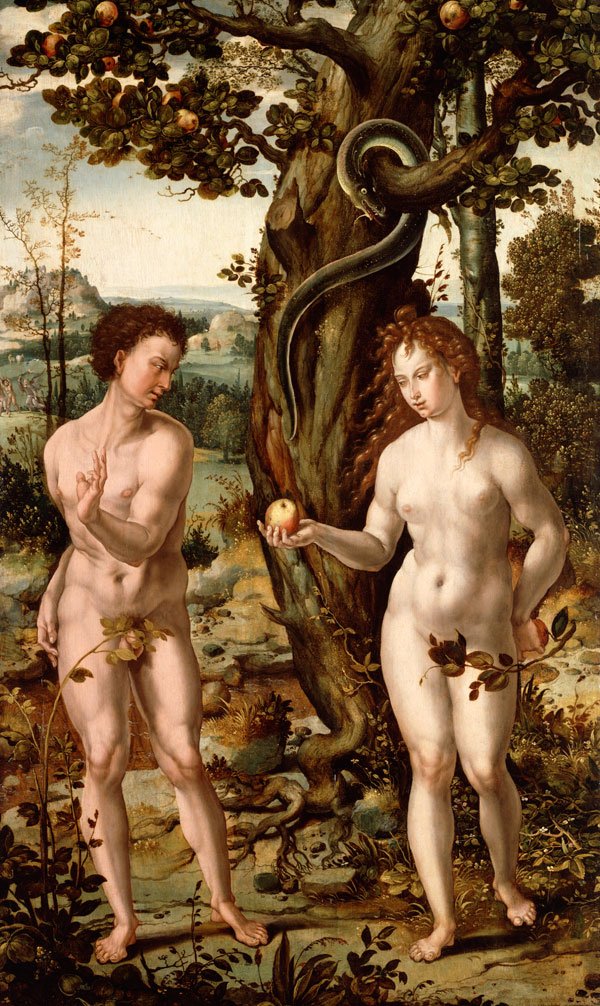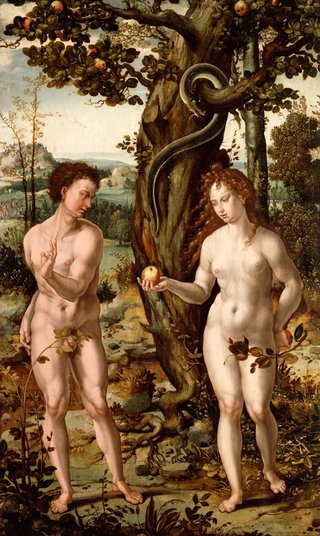

-
Acquisition
Possibly Alleyn Bequest, 1626 or Cartwright Bequest, 1686
-
Accession number
DPG505
-
Artist
Workshop of Jan (Sanders) van Hemessen
-
Date
1520-30
-
Dimensions
106.7 x 64.8 cm
-
Materials
Oil on panel
At the edge of a forest, Eve hands Adam the forbidden fruit from the tree of the knowledge of good and evil. This story is taken from the Book of Genesis, which tells of the creation of the world in the Christian and Jewish traditions. Although Adam recoils, his eyes are firmly fixed on the tempting apple. This painting incorporates multiple narrative episodes and, in the left-hand distance, Adam and Eve’s expulsion from the Garden of Eden can be witnessed, their punishment after having succumbed to the forbidden fruit (Genesis, III, 23-24).
This painting is thought to be by an artist in the sizeable workshop of the Flemish painter, Jan (Sanders) van Hemessen (c. 1500-66). Hemessen trained and worked in Antwerp, Belgium, but also travelled beyond this city – including to Italy early in his career, around 1520. Hemessen and the artists in his workshop are often associated with the so-called Antwerp 'Romanists' – sixteenth-century Flemish painters who took inspiration from Italian painters such as Michelangelo (1475-1564) and Raphael (1483-1520), and Classical sculpture and architecture.
While not painted by Hemessen, this painting shows the broad reach of his style and artistic interests. The figures’ poses and muscular bodies are based on a 1504 engraving of Adam and Eve by German artist Albrecht Dürer (1471–1528), whose work the artist would have known. Both the engraving and this painting portray Adam and Eve according to a combination of classical ideals and close attention to human anatomy. In particular, Adam’s stance, known as a contrapposto (a classical device in which one leg supports the weight of the body and the other is bent, causing the torso and shoulders to twist), creates a sense of movement, tension, and uncertainty. The painter of this work relies on this classical repertoire to convey the interior emotional states of Adam and Eve at this crucial moment before the Fall.

Want to use or download this artwork?
For personal use - Download artwork
For commercial use - Purchase a licence & download on Bridgeman images